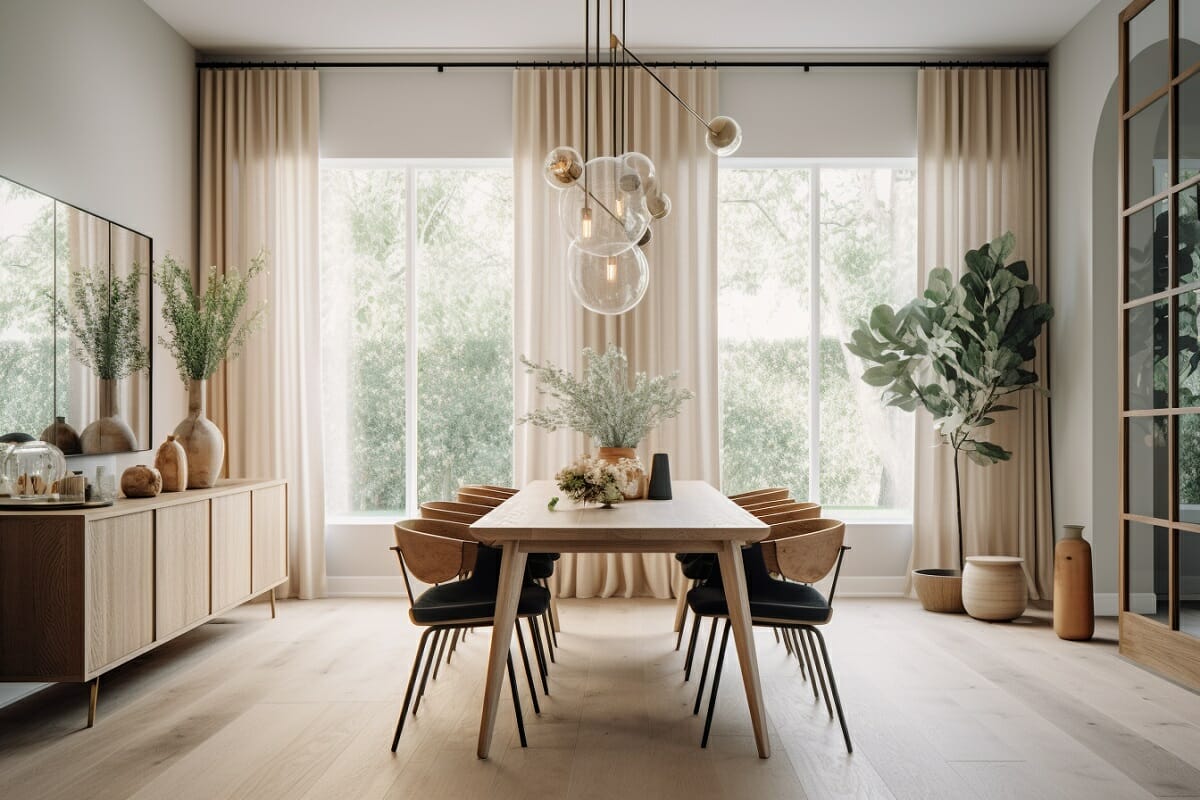Table of Contents
- Introduction
- Choosing the Right Style
- Deciding on a Color Scheme
- Selecting the Right Furniture
- Lighting Tips for Ambiance
- Adding Decor Accents
- Creating a Functional Layout
- Finishing Touches for a Cozy Atmosphere
Introduction
Creating the perfect dining room is an art that combines both aesthetics and functionality. It’s a space where families gather for meals, celebrate special occasions, and create lasting memories. Thus, designing a dining room that is both stylish and functional is essential. One excellent way to enhance your dining space is by incorporating high-quality furniture, such as Amish dining room furniture in Tulsa. This type of furniture is renowned for its craftsmanship and timeless appeal. In this guide, we will explore essential steps to design a dining room that is both stylish and welcoming, ensuring it becomes a favorite spot for memorable gatherings.
Choosing the Right Style
Your dining room should reflect your taste and the overall theme of your home. It would help if you were consistent whether you prefer contemporary, classic, or rustic styles. The right style can significantly affect how inviting and cohesive your dining space feels. For instance, a modern dining room might feature sleek furniture with clean lines, while a rustic dining room might incorporate wooden elements and earthy tones. Be sure to consider how the dining room style will mesh with the adjoining spaces in your home for a seamless flow.
Deciding on a Color Scheme
The color scheme sets the tone for your dining room. Neutral tones like beige, ivory, and soft grays can create a calm and elegant atmosphere, ideal for a sophisticated dining experience. On the other hand, bold colors such as deep blues, rich greens, or even vibrant reds can add a dramatic and lively effect. Consider how the colors complement or contrast your furniture and decor when choosing a color palette. For professional advice on selecting the right dining room colors, you can find some common tips and mistakes to avoid. Remember, a suitable color scheme can enhance the overall ambiance and make your dining room more inviting.
Selecting the Right Furniture
Furniture forms the backbone of your dining room. It’s crucial to select pieces that are both stylish and practical. Tables, chairs, and storage units should be chosen carefully to match your room’s style and size. Consider the size of your dining space when selecting a table; a larger table might be suitable for an expansive room, while a round table can make a smaller dining room feel more intimate. High-quality pieces, like those from Amish furniture builders, offer longevity and timeless appeal. Investing in durable, well-crafted furniture ensures that your dining pieces remain beautiful and functional for years.
Lighting Tips for Ambiance
Your dining room’s lighting dramatically influences the atmosphere it creates. Combine task, ambient, and accent lighting to create a cozy and welcoming ambiance. Ambient lighting, such as overhead chandeliers or pendant lights, provides general illumination. Task lighting, such as under-cabinet lights, focuses on specific areas, while accent lighting, like wall sconces or table lamps, highlights particular features or decor pieces. Overhead chandeliers, wall sconces, and floor lamps can all contribute to the overall lighting scheme. Remember, the proper lighting can highlight your decor and make dinner gatherings more enjoyable, creating a delightful dining experience for everyone.
Adding Decor Accents
Decorative accents like artwork, mirrors, and table settings can add personality and character to your dining room. Select pieces that elevate the room and go well with your style without overpowering it. A strategically placed art can be the center of attention, and ornate mirrors can increase the impression of light and space. Elegant table settings, including dinnerware, glassware, and centerpieces, can make everyday meals unique and festive. Thoughtfully selected accessories can make your dining room feel unique and welcoming, reflecting your personality and taste.
Creating a Functional Layout
The layout of your dining room should facilitate easy movement and conversation. Ensure ample space for chairs to be pulled out and enough room for guests to navigate comfortably around the table. Consider the room’s flow and how people enter and exit the dining area. A well-thought-out layout enhances the dining experience, making entertaining and enjoying meals with loved ones easier. Additionally, consider adding storage solutions like buffets or cabinets to keep dining essentials, such as table linens and serving dishes, within easy reach.
Finishing Touches for a Cozy Atmosphere
Finally, add some finishing touches to make your dining room feel cozy and inviting. This could be through soft textiles, such as cushions or throw blankets on chairs, which can add a layer of comfort and warmth. Scented candles can provide a pleasant aroma and create a soft, flickering light that enhances the ambiance. Your dining area can feel more alive and fresh with indoor plants that bring a little bit of nature inside. Personal touches can transform your dining space into a warm and welcoming area where family and friends love to gather, making every meal special.


/filters:no_upscale()/media/ad5744a6-0a39-4029-a9b6-ed65b75b7451.png)
